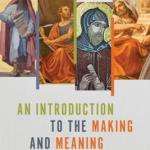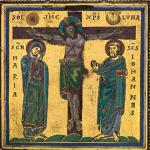Bodies are objects, but beginning with Husserl philosophers, anthropologists and others have considered not the objective character of the body but the “live body” that is both a living object and a cultural artifact. In the sense that the lived body is a cultural artifact, writes John Dunnill in his Sacrifice and the Body, there is “no ‘natural’ body.” He doesn’t deny the role of genetics or our dependence on material substances and processes, but “the body, as actually lived and experienced, is shaped by its own life, experience, and understanding” (19).
Dunnill puts some specificity to this with a neat list of the factors that the body interacts with: “the effects of the relevant biological system (digestion, growth, reproduction) but necessarily adapted to the physical environment with its specific resources of food, heat, shelter, and son on”; “the skills and tasks that a body adapts itself to in interacting with that environment in work”; “the social structuring of human community in terms of family groups, distinctions of race, gender, social hierarchy, kinship relations”; “the controls on behaviour and desire exercised on the body by this community and its structures”; “the self-disciplines taken on by individuals as agents in response to community controls and chosen life goals”; “socially construction notions of space and time, with symbolic systems or languages operative in the group and expressed in terms of dress, bodily markings, rituals, interpretations”; “the stated or unstated theoretical discourse or cosmology.”
In short, the body is “the primary cultural artefact,” and “necessarily social and transpersonal,” so that the “experience of the lived body is inevitably shaped by the physical, economic, social, political, and religious character of their specific community” (20).
Drawing on Pierre Bourdieu, Dunnill argues that bodies are subject to a habitus, “‘the durably installed generative principle of regulated improvisation,’ a set of historically grounded dispositions realized in particular practices, structures of behaviour which proceed by non-identical repetition” (21).















